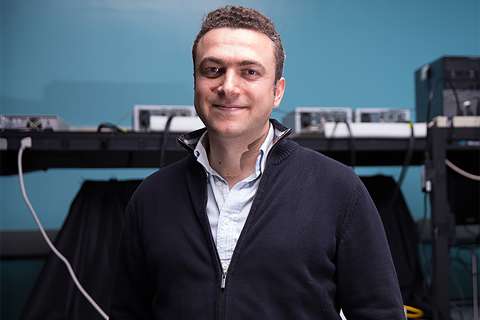Breast tomosynthesis — state-of-the-art technology that produces three-dimensional mammograms — is now available at UCLA Health’s medical campuses in Westwood and Santa Monica.
The technology, which was recently approved by the U.S. Food and Drug Administration, uses X-ray imaging and high-powered computing to produce three-dimensional mammograms that provide more detailed views of breast tissue layers than conventional breast imaging.
“I’m pleased that UCLA can offer breast tomosynthesis,” says Anne Hoyt, MD, medical director for breast imaging at UCLA and director of the Barbara Kort Women’s Imaging Center in Santa Monica. “I truly think this is one of the biggest advances we’ve had in breast imaging in a long time.”
A clinical study published in the journal Radiology, found invasive breast cancer detection increased 40 percent and all breast cancer detection rose 27 percent when radiologists used three-dimensional mammography combined with conventional breast imaging. The study also showed that breast tomosynthesis led to a 15 percent decrease in false positives that cause women to be called back for additional testing after their initial screening exam.
“Mammography is often criticized for its false positives, which create fear and anxiety and then turn out to be nothing,” Dr. Hoyt says. “Having fewer call-backs is a huge benefit of tomosynthesis.”
During breast tomosynthesis, the breast is compressed between two plates just as it is during traditional digital mammograms. When the breast is in position, the imaging arm of the device moves in an arc while taking 15 very low-dose X-ray images of the breast. The system’s software converts the low-dose images into a stack of thin, cross-sectional views of the breast, allowing physicians to see subtle differences that may otherwise be hidden in two-dimensional images. The imaging procedure takes about four seconds, no longer than traditional mammograms and with no more discomfort.
Although breast tomosynthesis is especially good at detecting cancer in women with dense breast tissue, women with fatty tissue can benefit, as the technology has been shown to find more cancer in both types of breasts.
While breast tomosynthesis exposes women to twice the radiation they would receive from traditional digital mammograms, the radiation levels are still within regulatory limits, Dr. Hoyt says. The overall dose will be halved to match conventional mammograms when clinicians begin using a new synthetic 2D mammogram — approved by the FDA on May 28 for use in conjunction with 3D tomosynthesis.
“The FDA approved the use of breast tomosynthesis because the benefits clearly outweigh the risks,” Dr. Hoyt says. “The technology isn’t perfect, but it is truly impressive and we do believe it is a superior tool for screening and diagnosing breast cancer in most women.”
Learn more about UCLA Radiology at radiology.ucla.edu



